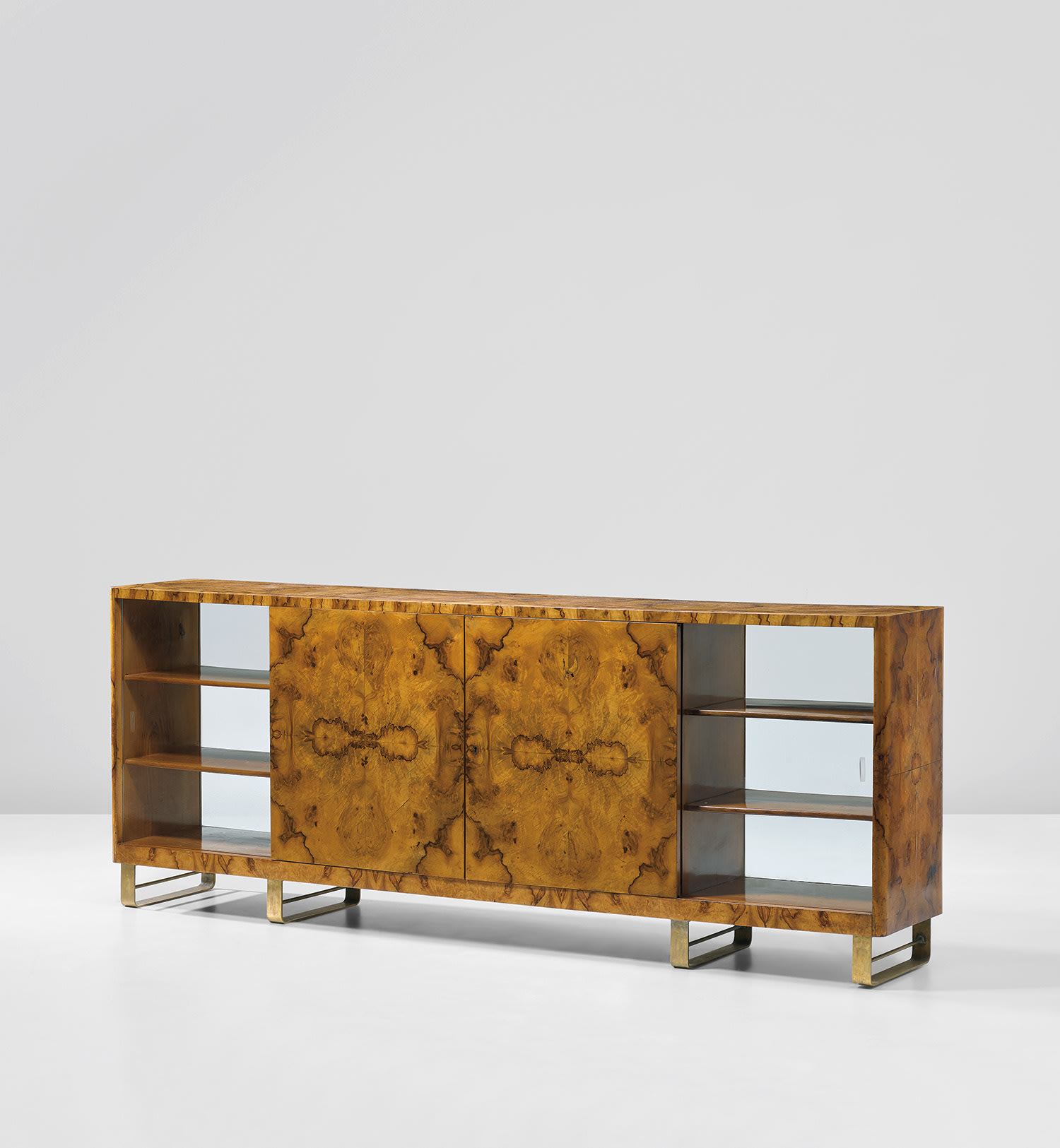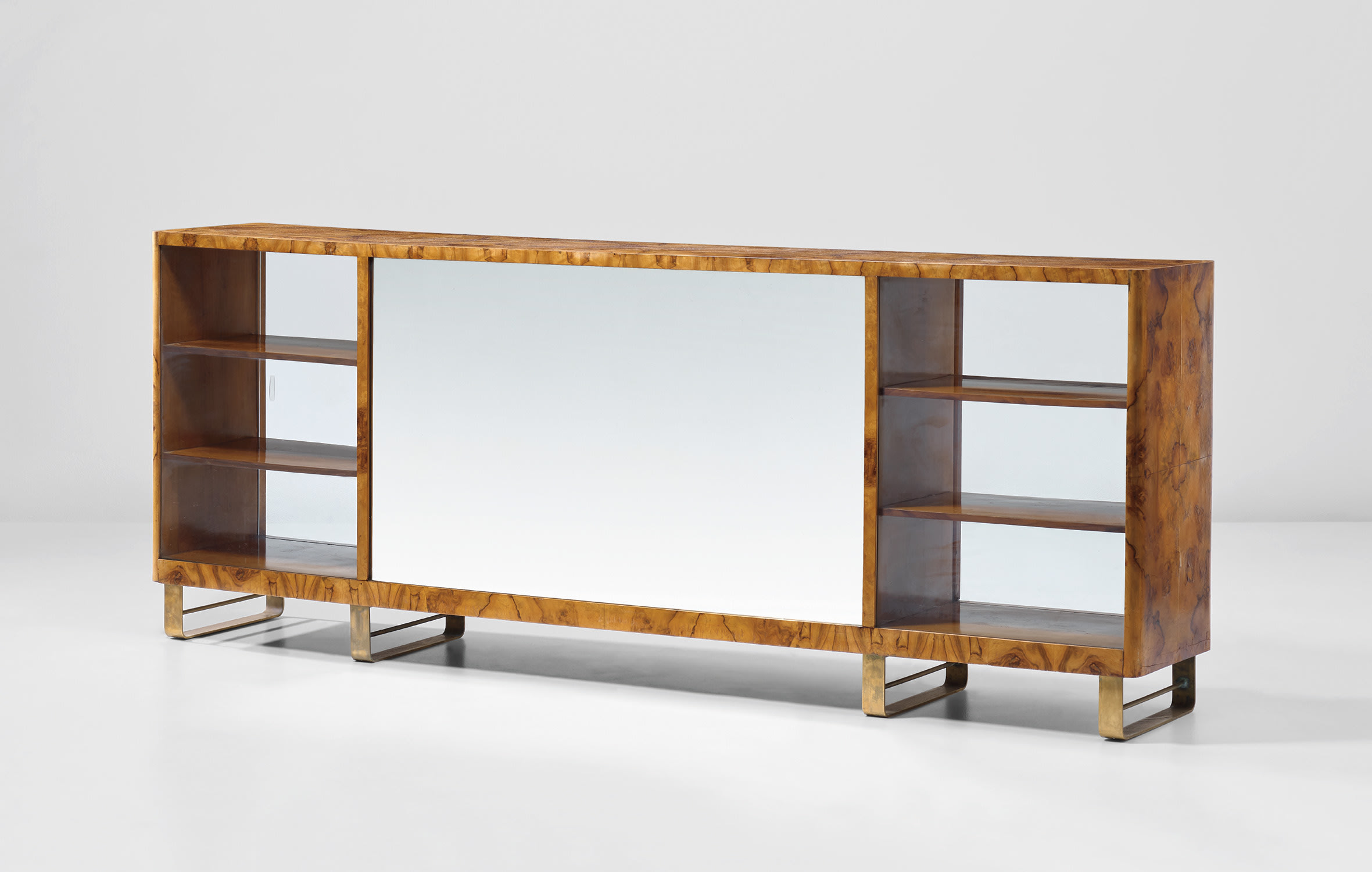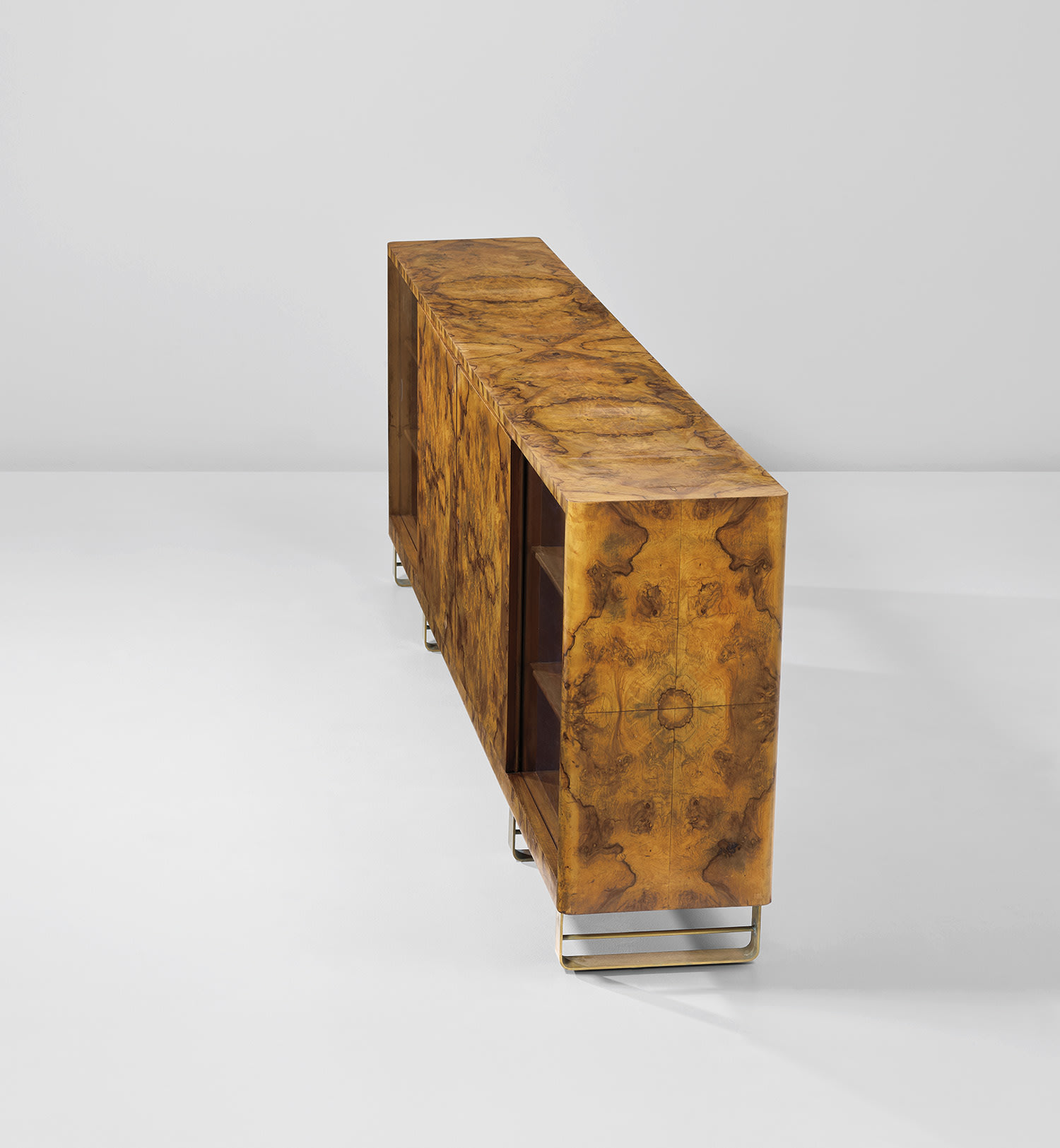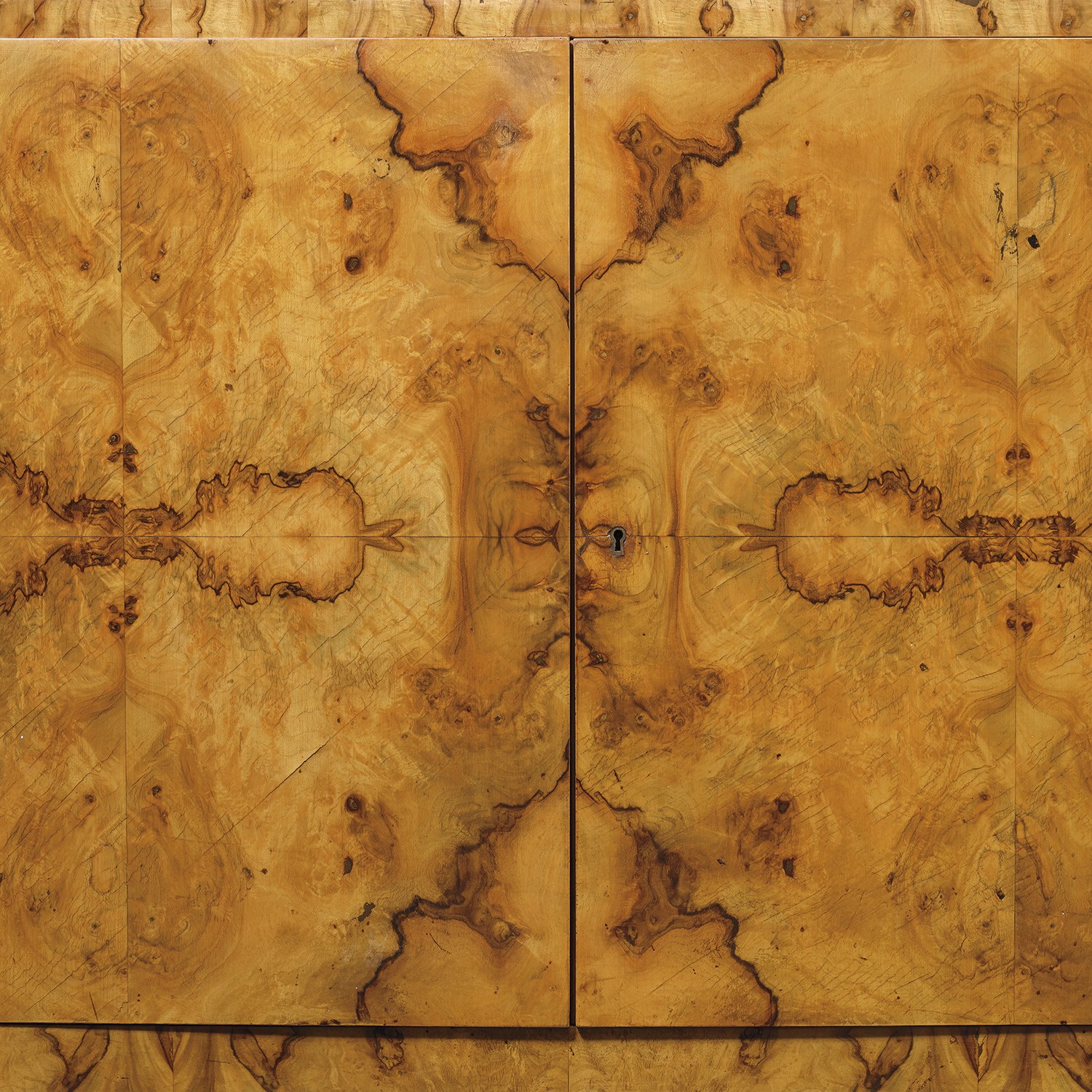







6
Gio Ponti
Rare sideboard
Full-Cataloguing
By Brian Kish
Some key elements of the present elongated sideboard already appear in sketches for related pieces published in Domus in 1932. Together they mark Gio Ponti's earliest departure from his late 1920s Novecento inventions towards the emerging Rationalist mode of 1930s Milan. His late 1920s 'Domus Nova' production pieces for La Rinascente department stores were an abstract distillation of neo-classicism and were met with great success in furnishing the rapidly expanded dwellings of the Milanese middle classes. This paved the way for recurring 1930s private commissions that allowed Ponti to experiment with newer concepts. Throughout that period Ponti published extensive documentation of these unique furnishings in Domus in the context of the Rationalist buildings or interiors to which they were destined. In his own words, they were ‘demonstrations’ – ‘demonstrations of the possibility of a ‘pleasant’ urban architecture... pointing out the aims achieved’ (Lisa Licitra Ponti, Gio Ponti: The Complete Work 1923-1978, London, 1990, p. 65).
‘I learned it from Loos, Adolf Loos, the great pioneering Austrian architect (whom I met personally). He used to tell me that the foot and leg of a chair or any piece of furniture must be always ‘a little too thin’, a spire always ‘a little too high’, a bridge always ‘a little too tense’. Always a challenge, always a success’ (Gio Ponti, Amate l'architettura, Genoa, 1957, p. 110). When it came to his own furniture designs, Ponti who had met Adolf Loos probably in late 1920s Paris, seems to have absorbed some of the older master’s methods of articulating interior space. With Loos the ornament was achieved in manipulating natural materials, such as marble or wooden wall paneling cut in book-matched patterns, which imparted a note of luxury to every aspect of these interiors. In the present Ponti sideboard we see his rare use of radica ferrarese (burled root wood), which was cut into halves or quarters and veneered across the expansive surface. This achieved a unity, as well as a slight obliteration of each element within the overall scheme, culminating in an exhilarating kaleidoscope effect obtained by lining the two short ends with quartered veneers.
The 1932 sideboard rests on four brass bands whose folded ribbon shape is repeated at the four curved corners of the top surface. This design functioned as both a room divider separating living and dining spaces and as a utilitarian object for storing dining utensils. The lateral end sections with interior shelves are left exposed by glass windows, thereby revealing the ceramic, silver, and stemware. The front elevation that faced the living room has a large rectangular expanse of mirrored glass. This not only mitigated the expansive volume of the sideboard, but spatially distorted the living room by reflecting back upon itself the contents of that space. This device of twisting perspective with mirrored surfaces was also used to convincing effect in Loos’ interiors to highlight his room transitions.
The 1930s was the decade when Ponti was busiest with architectural commissions for industry, including Montecatini, RAI, and Ferrania, as well as significant residential buildings: Casa Rasini, Casa Marmont and all the various Case Tipiche projects. All were rationalist designs and the interior fixtures and fittings were closely aligned with his architectural methods. Writing in a 1933 Domus editorial titled 'La casa all’italiana', Ponti begins with the sentence: ‘Comfort in the home lies in something higher, it lies in obtaining through architecture a measure for our own thoughts’ (Licitra Ponti, 266). This complex but clearly designed custom sideboard echoes these words and is a brilliant precursor to many of Ponti's achievements in the postwar decades.
Gio Ponti
Italian | B. 1891 D. 1979Among the most prolific talents to grace twentieth-century design, Gio Ponti defied categorization. Though trained as an architect, he made major contributions to the decorative arts, designing in such disparate materials as ceramics, glass, wood and metal. A gale force of interdisciplinary creativity, Ponti embraced new materials like plastic and aluminum but employed traditional materials such as marble and wood in original, unconventional ways.
In the industrial realm, he designed buildings, cars, machinery and appliances — notably, the La Cornuta espresso machine for La Pavoni — and founded the ADI (Industrial Designer Association). Among the most special works by Gio Ponti are those that he made in collaboration with master craftsmen such as the cabinetmaker Giordano Chiesa, the illustrator Piero Fornasetti and the enamellist Paolo de Poli.